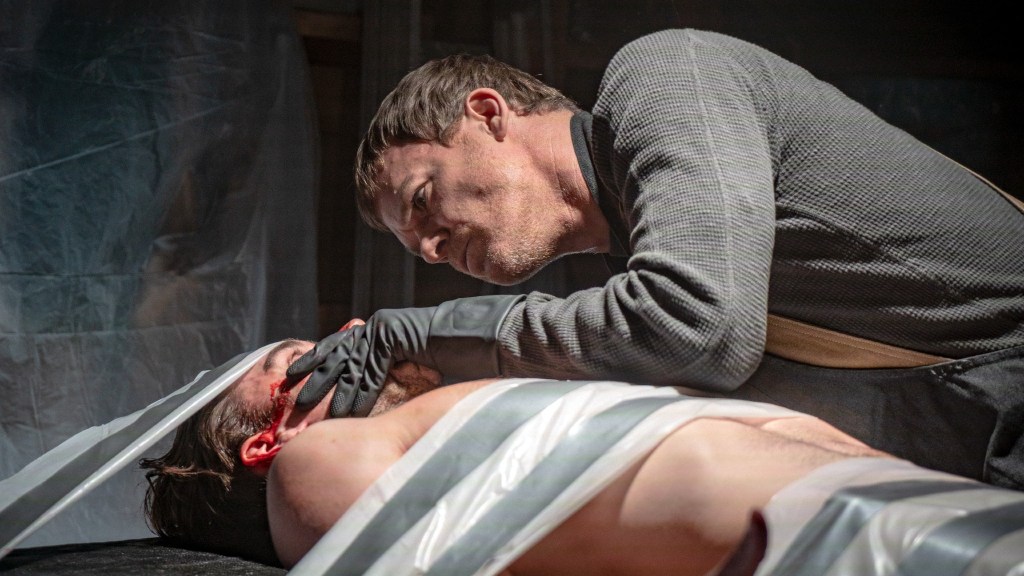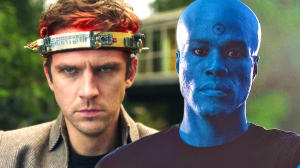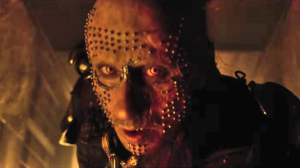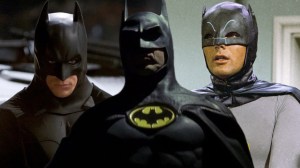Dexter captivated audiences for eight seasons, plus a revival and a prequel (with another on the way), with its unique brand of vigilante justice. As a blood-spatter analyst for Miami Metro Police by day and a meticulous serial killer of killers by night, Dexter Morgan (Michael C. Hall) navigated a complex double life, guided by his adoptive father Harry’s (James Remar) “Code.” The show was a thrilling dive into the mind of a psychopath trying to channel his dark urges for, arguably, the greater good, a premise that immediately turned it into a hit. Furthermore, its intricate plots, compelling character studies, and shocking twists garnered a massive following and critical acclaim, particularly in its early seasons. Finally, Dexter’s constant cat-and-mouse games, both with his targets and with those who might discover his secret, created an addictive tension that kept viewers hooked.
Videos by ComicBook.com
However, even the most beloved series can accumulate narrative wrinkles over a long run, and Dexter is no exception. With numerous intricate storylines spanning nearly a decade, some moments stretched credulity or left glaring inconsistencies that fans continue to debate. These aren’t necessarily show-ruining flaws, but they represent those nagging questions and logical leaps that make you pause and wonder, “Wait, why didn’t anyone notice that?” Here are seven Dexter plot holes and head-scratchers that still bug us.
1)The Miraculously Undiscovered Blood Slide Box

One of Dexter’s most iconic and incriminating possessions was his wooden box filled with blood slides, trophies from each of his victims. For the majority of the original series, Dexter hid this box inside the air conditioning unit of his apartment. Considering his apartment was searched multiple times by law enforcement, including by astute investigators like Frank Lundy (Keith Carradine) and even his own sister Debra Morgan (Jennifer Carpenter) on occasion, it’s astonishing that this crucial piece of evidence was never found. After all, an AC unit is a fairly obvious place to check for hidden items, especially during a thorough search of a potential suspect’s home.
The sheer audacity of hiding such a damning collection in a relatively accessible spot, coupled with the repeated failure of trained investigators to locate it, stretches believability. While Dexter was meticulous, the idea that no search was ever thorough enough to uncover the box, especially when suspicion fell directly on him or near him, feels like a significant oversight. This plot point often relied more on plot armor than plausible evasion, leaving fans to wonder how Miami Metro missed the Bay Harbor Butcher’s calling card right under their noses.
2) Miami Metro’s Pervasive Incompetence

A recurring element throughout Dexter that often veered into plot hole territory was the general incompetence of the Miami Metro Homicide department. While it was necessary to allow Dexter to operate, the frequency with which his colleagues missed obvious clues or failed to connect dots directly pointing to him became almost comical at times. Dexter, despite being a blood spatter analyst, frequently visited active crime scenes he wasn’t assigned to, tampered with evidence, and conducted his own off-the-books investigations with minimal questioning from his superiors or partners.
Characters like Angel Batista (David Zayas) and Vince Masuka (C.S. Lee), while providing comic relief and occasional insight, often seemed oblivious to Dexter’s suspicious behavior. Even when leads pointed towards someone within their department, the internal investigations were frequently superficial or easily misdirected by Dexter. This collective blind spot allowed Dexter to continue his killing spree for years, making the very institution he worked for appear consistently outmaneuvered by one of their own, often in ways that defied logical police procedure.
3) Dexter’s Unfathomable Body Disposal Method

Dexter’s preferred method of disposing of his victims involved dismembering them, placing the parts in trash bags weighted down, and then boating out into the Gulf Stream to dump them into the ocean. While the Gulf Stream’s strong currents offer some plausibility for evidence dispersal, the sheer number of bodies Dexter disposed of this way over decades, often from a relatively small boat in busy Miami waters, is highly improbable. The risk of being seen, forensic traces left on his boat (The Slice of Life), or even unexpected encounters with other boaters or coastal patrols seems immense.
The show rarely delved into the logistical nightmares of this process beyond showing Dexter heading out to sea. Questions about how he avoided radar, other boaters, or even random Coast Guard checks, especially when presumably transporting human remains, were largely glossed over. The idea that dozens, if not hundreds, of bodies could be dumped without a single bag washing ashore prematurely, or any anomalous forensic patterns being detected by oceanographers or marine biologists over the years, requires a significant suspension of disbelief.
4) Quinn Knowing Dexter was Kyle Butler

In Season 5, Detective Joey Quinn (Desmond Harrington) became highly suspicious of Dexter following Rita’s (Julie Benz) murder, even hiring a disgraced cop, Stan Liddy (Peter Weller), to investigate him. Liddy successfully uncovered Dexter’s alias, Kyle Butler, which Dexter had used during his pursuit of Arthur Mitchell, the Trinity Killer (John Lithgow). Liddy even photographed Dexter and Lumen Pierce (Julia Stiles) on Dexter’s boat disposing of a body. After Liddy’s death (at Dexter’s hand), Quinn discovers these photos and information.
Yet, despite having concrete evidence that Dexter was not who he said he was and was involved in highly suspicious activity, Quinn’s investigation largely fizzled out. He confronted Dexter once, leading to a scuffle, but then seemed to drop the Kyle Butler lead almost entirely, partly due to his relationship with Deb. For a cop who was initially so determined, his failure to pursue this damning information felt like a dropped storyline, sacrificing Quinn’s investigative integrity for the sake of preserving Dexter’s secret.
5) The Original Lumberjack Ending

The original series finale of Dexter in Season 8 remains one of the most controversial endings in television history, and a significant part of that controversy stems from its logistical implausibility. After sending his son, Harrison, and girlfriend, Hannah McKay (Yvonne Strahovski), to Argentina, Dexter sails his boat directly into a hurricane, seemingly to commit suicide after pulling the plug on a brain-dead Debra. The wreckage of The Slice of Life is found, and Dexter is presumed dead. However, the final scene shows Dexter alive, working as a lumberjack in Oregon.
This raises some questions. How did Dexter survive a hurricane at sea that destroyed his boat? How did he manage to travel from Florida to Oregon with no resources, no boat, and presumably while being a person of interest in his sister’s death and his own disappearance? The show offered no explanation for this miraculous survival and relocation. As a result, this ending felt unearned and illogical, creating a significant plot hole that left many fans deeply unsatisfied and questioning the writers’ choices.
6) Hannah McKay’s Continued Evasion and Reappearance

Hannah McKay was a cunning serial poisoner who became Dexter’s lover. After Dexter helped her escape custody at the end of Season 7, she became a known fugitive. Despite this, she managed to live relatively openly in Miami in Season 8, often putting herself in situations where she could easily be recognized. Her ability to evade a statewide, possibly national, manhunt for so long, even with Dexter’s occasional help, seemed unlikely.
This stretched credulity even further in Dexter: New Blood. In the revival, it’s revealed that Hannah successfully fled to Argentina with Harrison and lived there for years before dying of cancer. While her death happened off-screen, her initial escape with Harrison and their ability to live undetected internationally, especially with a child who was effectively part of a major missing person’s case, raises many questions about how she managed to avoid authorities for so long without significant resources or connections beyond what was shown.
7) Angela’s Bay Harbor Butcher Realization in New Blood

In Dexter: New Blood, Iron Lake Police Chief Angela Bishop (Julia Jones) eventually uncovers Dexter’s true identity as the Bay Harbor Butcher. While Angela was portrayed as a competent investigator, the speed and specific leaps in logic she made to connect “Jim Lindsay” to a decade-old, famously unsolved Miami serial killer case felt somewhat convenient for the plot’s progression. She connected him via ketamine usage (a drug not exclusively used by the BHB) and a hunch from a true-crime podcaster, then a crucial tip-off from Angel Batista.
While Batista’s input was significant, the initial path to her suspecting Dexter as the BHB, especially given that Miami Metro Homicide, with all its resources, failed to do so for years despite him being in their midst, felt a bit accelerated. What’s worse is that the BHB case was complex, with James Doakes (Erik King) officially (though falsely) named the killer. For Angela, in a small town with limited resources, to unravel it all based on some circumstantial links and a revived old suspicion from Batista, while dramatically compelling, required some narrative shortcuts that made the resolution feel a tad rushed compared to the original series’ drawn-out cat-and-mouse games.
What Dexter plot holes or unexplained moments still have you puzzled? Share your thoughts in the comments below!









